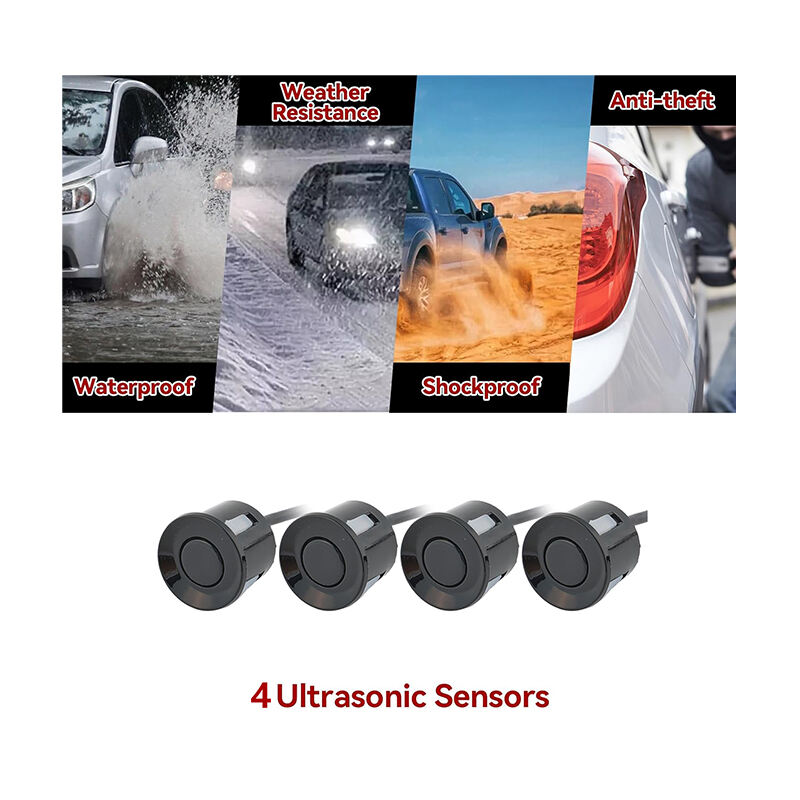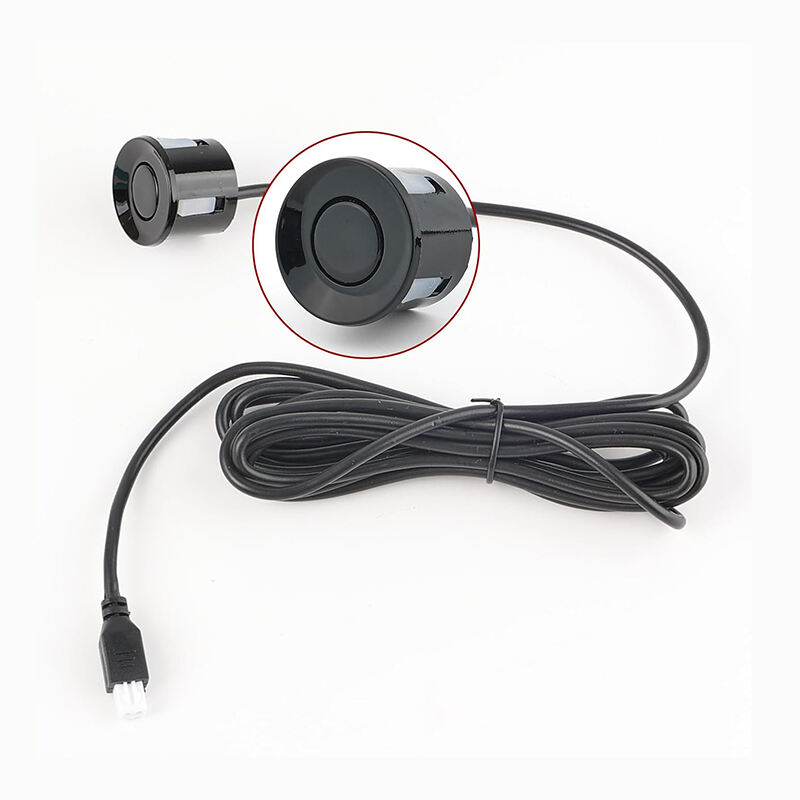The Evolution of Urban Driving Safety Technology
Modern city driving presents unique challenges that demand innovative solutions. Car proximity sensors have revolutionized the way we navigate crowded urban environments, offering drivers unprecedented awareness of their surroundings. These sophisticated electronic systems use various technologies to detect nearby objects, vehicles, and pedestrians, transforming the urban driving experience into a safer and more confident journey.
As cities become increasingly congested and parking spaces grow tighter, car proximity sensors have emerged as an indispensable feature for today's vehicles. These intelligent systems serve as an extra set of eyes, providing real-time feedback that helps drivers avoid collisions and navigate complex urban scenarios with greater precision.
Core Components and Functionality of Modern Proximity Systems
Sensor Types and Their Specific Roles
Car proximity sensors employ multiple technologies working in harmony to create a comprehensive detection system. Ultrasonic sensors emit high-frequency sound waves that bounce off nearby objects, calculating distance based on the return time. Electromagnetic sensors create a magnetic field around the vehicle to detect metallic objects, while radar sensors use radio waves to identify moving objects at greater distances.
Each sensor type serves a specific purpose in the vehicle's safety ecosystem. Front-mounted sensors excel at detecting obstacles during low-speed maneuvers, while side sensors monitor blind spots during lane changes. Rear sensors prove invaluable during parking operations, offering precise distance measurements to nearby obstacles.
Integration with Vehicle Systems
Modern car proximity sensors don't operate in isolation. These sophisticated devices integrate seamlessly with other vehicle systems, including backup cameras, dashboard displays, and autonomous parking features. The data from multiple sensors combines to create a comprehensive 360-degree view of the vehicle's surroundings, displayed through intuitive visual and auditory alerts.
The integration extends to advanced driver assistance systems (ADAS), where car proximity sensors contribute to features like automatic emergency braking and adaptive cruise control. This interconnected approach enhances both safety and convenience, making urban driving more manageable and less stressful.

Enhanced Safety Features in Urban Environments
Collision Prevention and Risk Reduction
In busy urban settings, car proximity sensors significantly reduce the risk of low-speed collisions. These systems excel at detecting obstacles that might be hidden in blind spots or obscured by the vehicle's structure. By providing early warnings of potential hazards, drivers can react proactively rather than reactively to dangerous situations.
The technology proves particularly valuable in preventing accidents with pedestrians and cyclists, who can sometimes appear suddenly in urban traffic. Car proximity sensors maintain constant vigilance, alerting drivers to movement in their vicinity and potentially preventing serious accidents.
Parking Assistance and Spatial Awareness
Urban parking challenges become considerably more manageable with car proximity sensors. These systems provide precise distance measurements to surrounding objects, making it easier to navigate tight parking spaces without damaging the vehicle or nearby cars. The continuous feedback helps drivers position their vehicles accurately, even in limited visibility conditions.
The enhanced spatial awareness extends beyond parking situations. When maneuvering through narrow city streets or navigating dense traffic, proximity sensors help drivers maintain safe distances and avoid scrapes and dents that often occur in urban environments.
Economic Benefits and Long-term Value
Insurance and Maintenance Advantages
Vehicles equipped with car proximity sensors often qualify for reduced insurance premiums due to their enhanced safety features. Insurance companies recognize that these systems significantly reduce the likelihood of accidents and property damage, particularly in urban environments where minor collisions are common.
The preventive nature of proximity sensors also leads to reduced maintenance costs over time. By helping drivers avoid minor accidents and scrapes, these systems protect the vehicle's bodywork and prevent the need for costly repairs. The initial investment in proximity sensor technology often pays for itself through avoided damage and maintenance expenses.
Resale Value and Market Appeal
Cars featuring proximity sensors maintain stronger resale values in the used vehicle market. As awareness of safety technology grows, buyers increasingly seek vehicles equipped with these advanced features. The presence of car proximity sensors can significantly enhance a vehicle's marketability and help it command premium prices in the secondary market.
The technology's contribution to vehicle preservation also helps maintain appearance and functionality, further supporting strong resale values. Used cars with well-maintained proximity sensor systems attract safety-conscious buyers willing to pay more for enhanced protection.
Future Developments and Technological Advances
Integration with Autonomous Systems
The evolution of car proximity sensors continues as manufacturers develop more sophisticated systems. Future generations of sensors will offer increased range, better accuracy, and enhanced integration with autonomous driving features. These improvements will further reduce the cognitive load on drivers while navigating complex urban environments.
Artificial intelligence and machine learning are being incorporated into proximity sensor systems, enabling them to better predict potential hazards and adapt to different driving conditions. This progressive enhancement of sensor capabilities paves the way for increasingly autonomous urban driving experiences.
Smart City Integration
Car proximity sensors are becoming part of a broader connected vehicle ecosystem. As smart cities develop, these sensors will communicate with urban infrastructure, other vehicles, and pedestrian devices to create a more comprehensive safety network. This integration will enable more efficient traffic flow and enhanced accident prevention in urban areas.
The future holds exciting possibilities for car proximity sensor technology, with developments in sensor miniaturization, increased sensitivity, and enhanced environmental adaptation. These advances will continue to improve urban driving safety and convenience, making city navigation more accessible for all drivers.
Frequently Asked Questions
How reliable are car proximity sensors in adverse weather conditions?
Car proximity sensors maintain good functionality in most weather conditions, though heavy rain or snow can temporarily affect their performance. Modern sensors include self-cleaning features and compensating algorithms to maintain reliability. Additionally, multiple sensor types working together help ensure consistent performance even when individual sensors face challenging conditions.
What maintenance do proximity sensors require?
Proximity sensors generally require minimal maintenance beyond regular cleaning to remove dirt and debris. It's important to keep sensors free from obstruction and check their alignment after any impact or repair work. Most systems include self-diagnostic capabilities that alert drivers to any operational issues requiring attention.
Can proximity sensors be added to older vehicles?
While aftermarket proximity sensor systems are available, factory-installed systems typically offer better integration and reliability. Professional installation of quality aftermarket sensors can provide similar benefits, though careful consideration should be given to system compatibility and installation expertise to ensure optimal performance.



